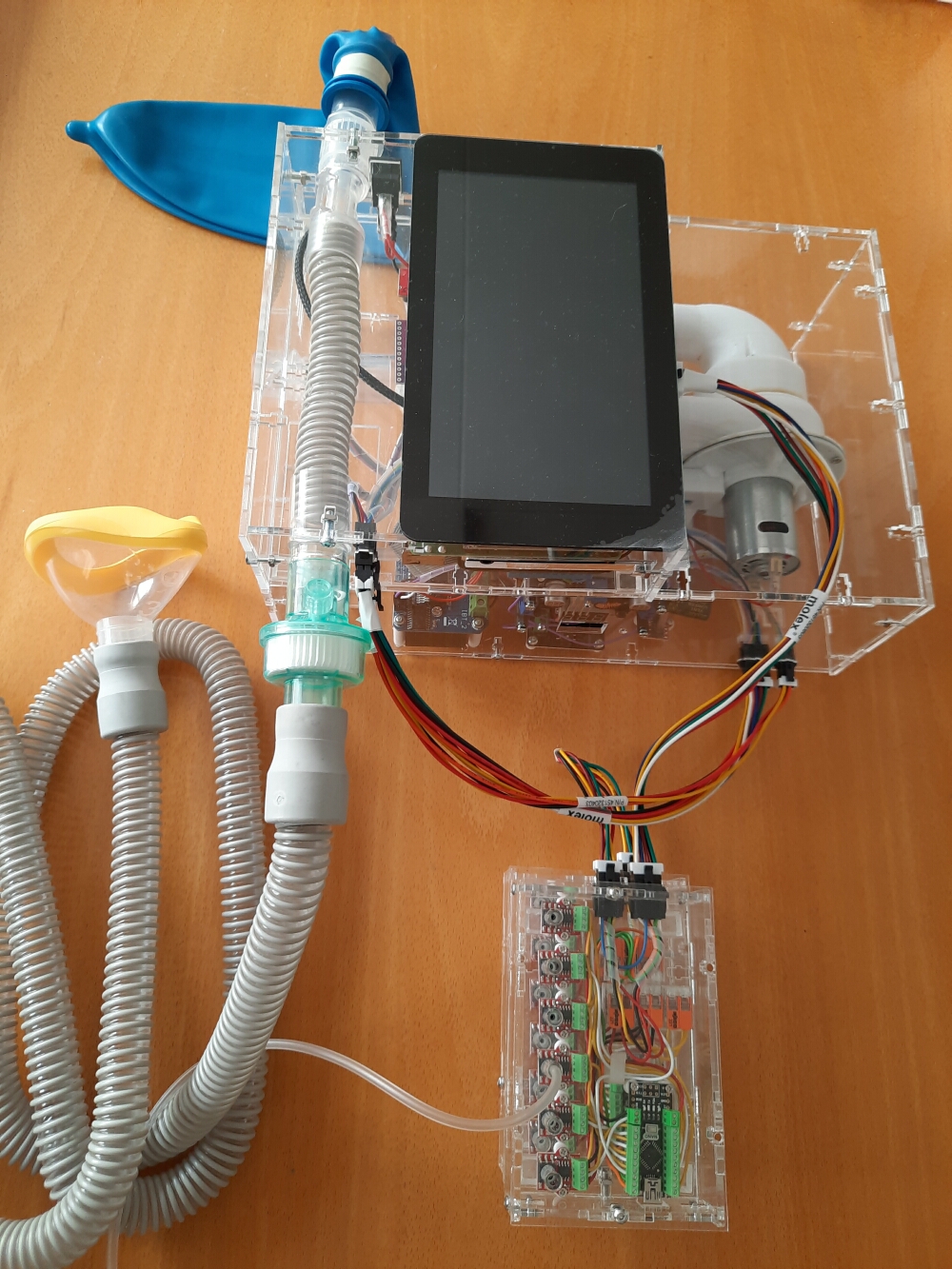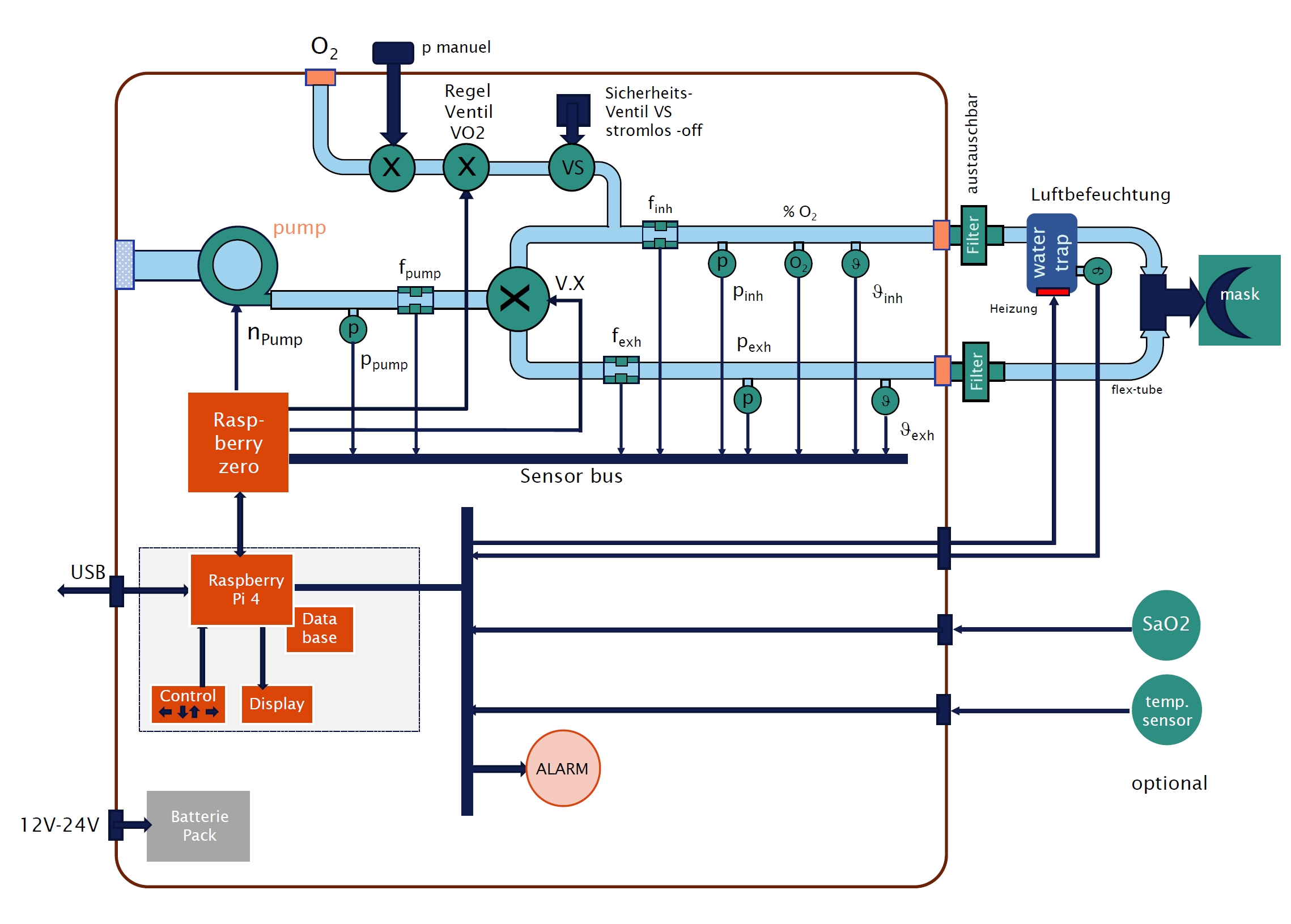For the Spiritum 1.0 respirator, not the usual piston pump but a space-saving, lightweight rotary pump has been used, which can be manufactured according to the Francis principle with corresponding switching and control valves, using conventional 3D printers. Sensors for pressure, flow, temperature, O2 and humidity together with the corresponding electronics were developed as a kit, which can now be find in a dediced GitHub repository together with the construction plans.
At the beginning, the latest developments in the field of ventilators were researched and also reproduced in order to be able to carry out comparative experiments regarding the basic functions.
The concept of integrating additional sensors, such as direct flow measurement, temperature, O2 and humidity, as well as SAO2 for external connection, was refined. At the same time, the new housing design including packaging was roughly defined. For signal processing, control and communication, a latest-generation Raspberry Pi microcomputer including new development tools (node-RED ) was used on a trial basis. The heart of the device, the rotary pump, was tested in several variants.

Finally, we also integrated a lung simulator to simulate the patient in the test.
Parallel to the individual component testing, the details of the hardware concept were developed and refined. The concept of the ventilator was optimised in several development steps, not least as a result of the very valuable discussions with the medical experts from the clinic.
The following graphic shows the current design: With the help of another flow sensor, the proportion of oxygen is determined and measured with an O2 sensor.

Design Overview
We are currently testing the Spiritum 1.0 ventilator with the VentMont T0.4 tester/monitor….
